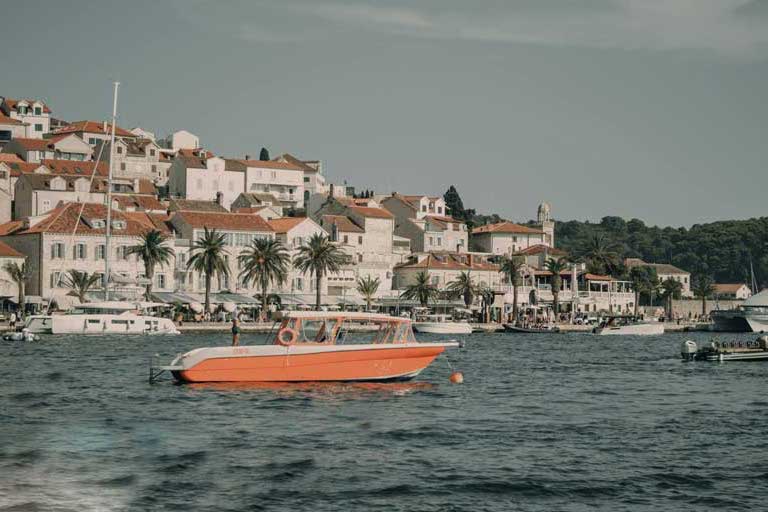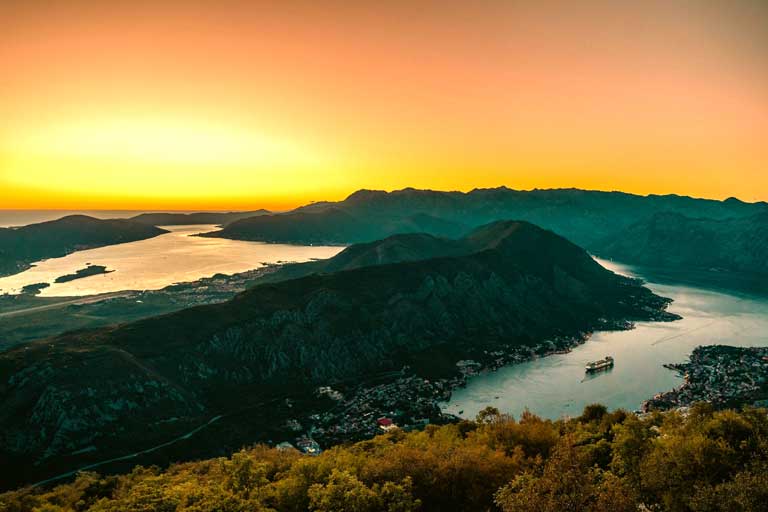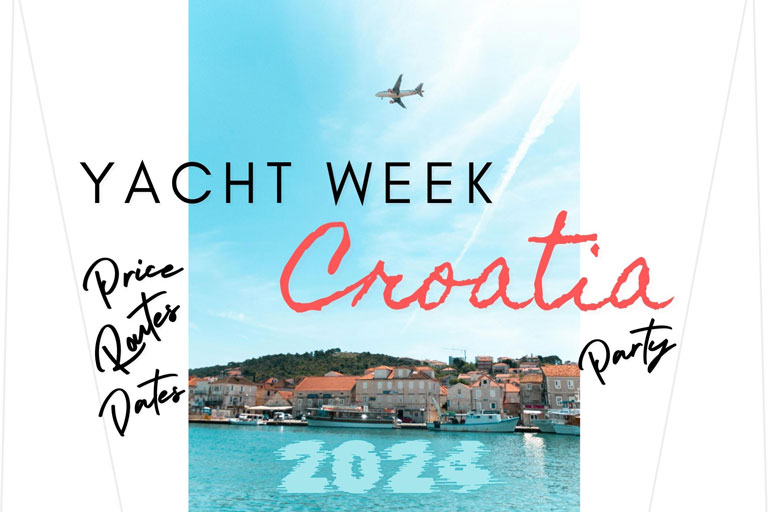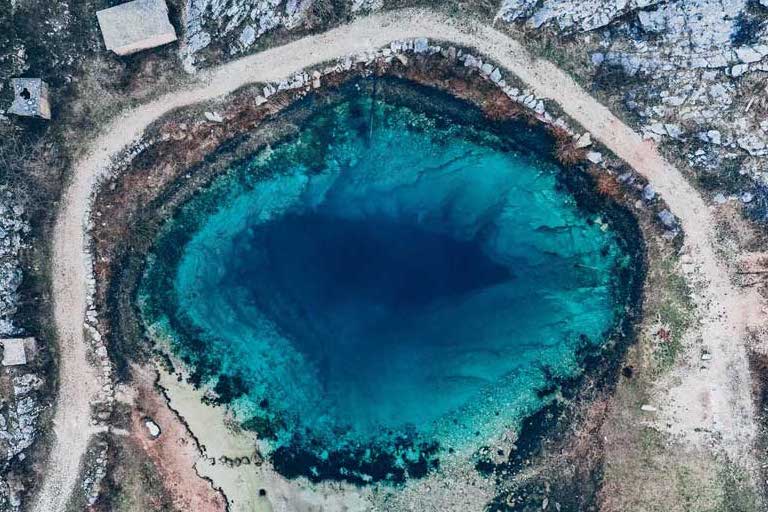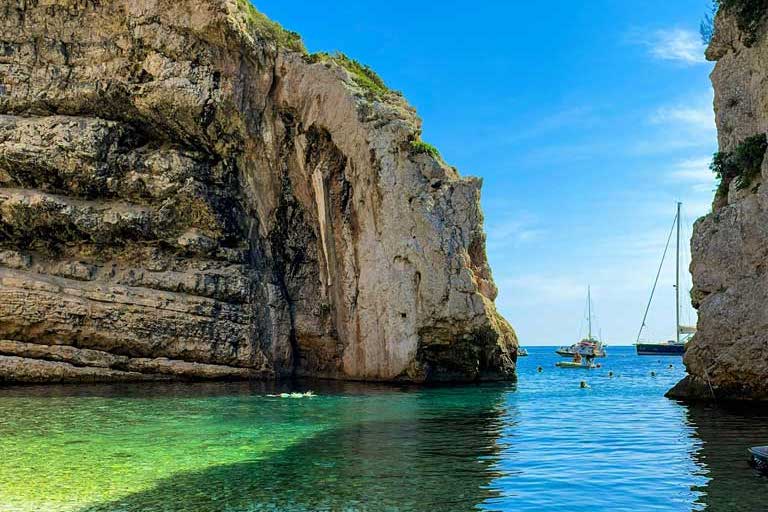What is Croatia known for? The Balkan country has charmed tourists with its beautiful beaches, island hopping trips, historic landmarks, and fascinating history. Where is Croatia? Croatia is situated in southeast Europe on the Adriatic Coast.
The country’s serene surroundings, scenic towns, as well as intriguing culture serve as a magnet, drawing people to it. Travellers from across the world come to see and admire the tourist attractions in Croatia, and you can too!
Here, you’ll find the answer to your question:
What is Croatia Known For — Complete List
Without further ado, here’s a list of interesting facts about Croatia.
1. Croatia is Known for Island Hopping — Travel between the Beautiful Islands in Croatia
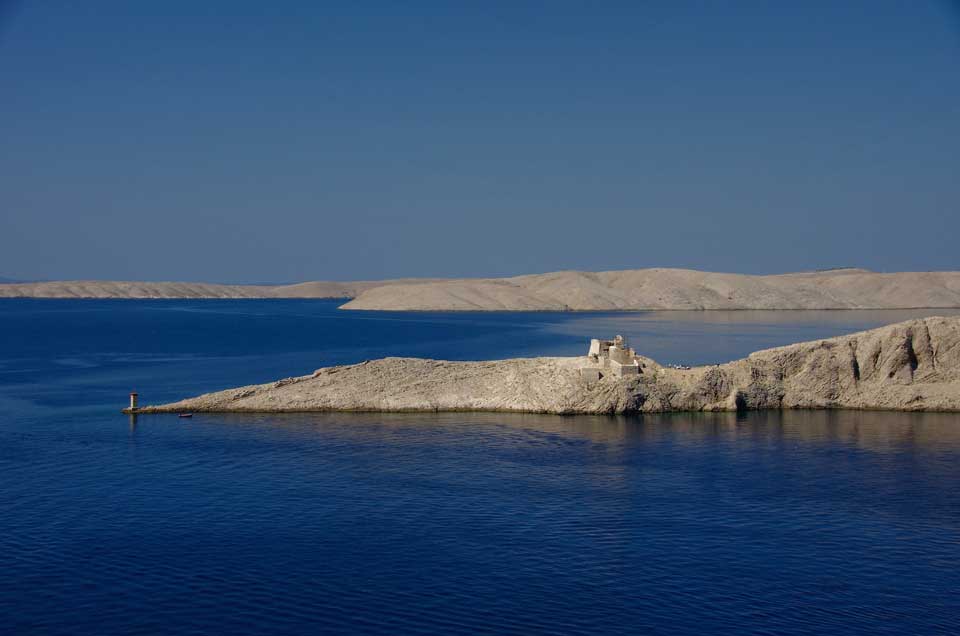
The Balkan country, Croatia, is well known for its ‘Island Hopping’! If you crave island hopping travel adventure, Croatia will give you just that and so much more! Situated off the coast, less than 50 islands are populated. The Croatian region of the Adriatic Sea has 718 islands, 78 reefs, as well as 389 islets.
This makes the Croatian archipelago the largest in the Adriatic Sea. In the Mediterranean Sea – it’s the second-largest archipelago, after the Greek. Moreover, every island gives off a different vibe. Some exude a party vibe whereas others exude a romantic vibe, for instance.
Since there are so many islands in Croatia, here are a few that tourists widely visit:

- Hvar Island
- Rab Island
- Korcula Island
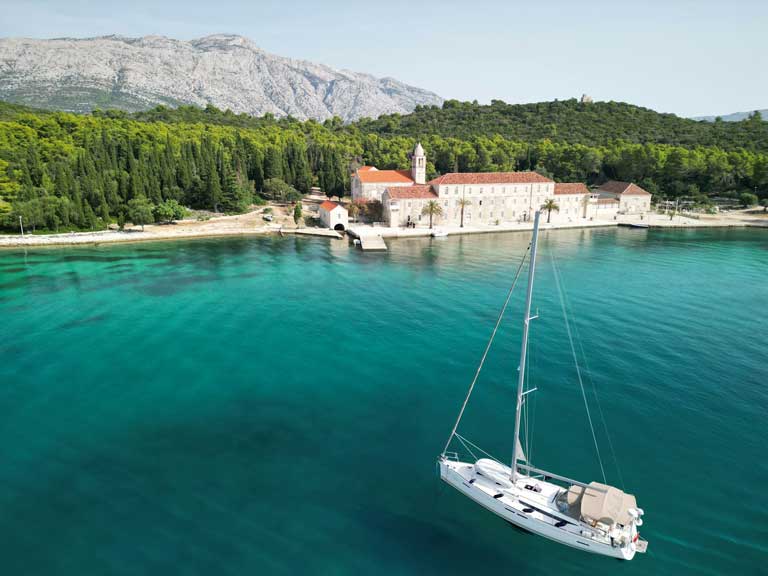
- Cres Island
- Losinj Island
- Dugi Otok Island
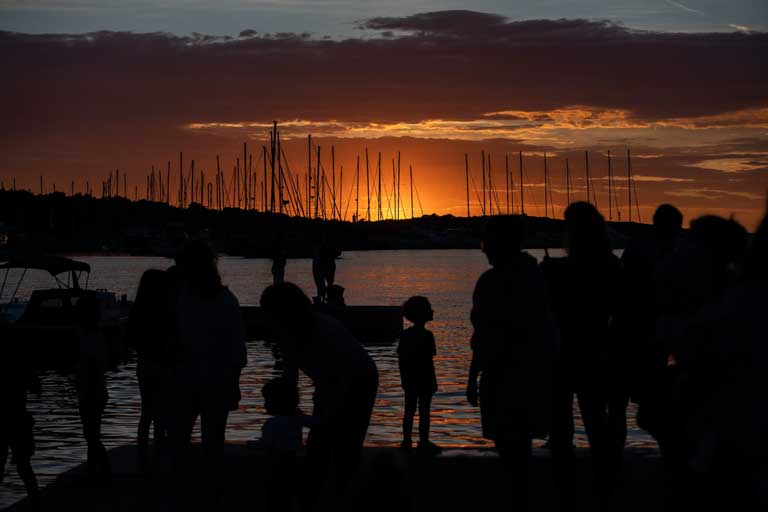
- Mljet Island
- Brac Island
Aside from checking out the numerous islands, don’t forget to visit Croatia’s picturesque pebbled beaches. Just so you know, otok means island in Croatian.
2. Game of Thrones
Did you know the popular TV show “Game of Thrones” was filmed in Croatia? Dubrovnik served as the filming location for King’s Landing, the Red Keep, the House of the Undying, and more! Additionally, the show used a few locations in Split.
To help you explore the show’s legendary filming locations, we have listed them down for you:
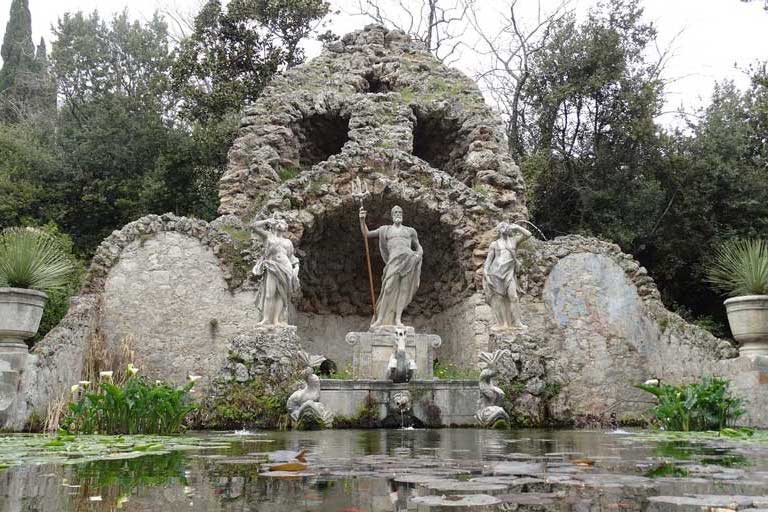
- Trsteno Arboretum, Trsteno is a 15th-century garden and the oldest in this part of the world. The show used the location to portray it as the garden of King’s Landing.
- Jesuits Staircase served as the steps of the Great Sept of Baelor in King’s Landing. You may remember it as Cersei’s “walk of shame.”
- Fort Lovrijenac was the Red Keep where Cersei talked to Petyr Baelish about the tournament to honour her son.
- Pile is the location of Blackwater Bay. It’s where Littlefinger talks to Sansa about escaping.
- Minceta Tower is the House of Undying. In the series, Daenerys had trouble finding its entrance.
- Klis Fortress, near the city of Split, was transformed into the city of Meereen. You may know it as the largest Slaver Bay city that Daenerys conquers.
- Diocletian’s Palace was another location in Split that was used as the throne room for Daenerys. Also, she trained her dragons in that room.
After all, is it really a surprise that the show went with Croatia to portray the mesmerising King’s Landing? As home to 1,185 islands, reefs, and islets, we all saw it coming.
3. Well Known Stunning Beaches in Croatia
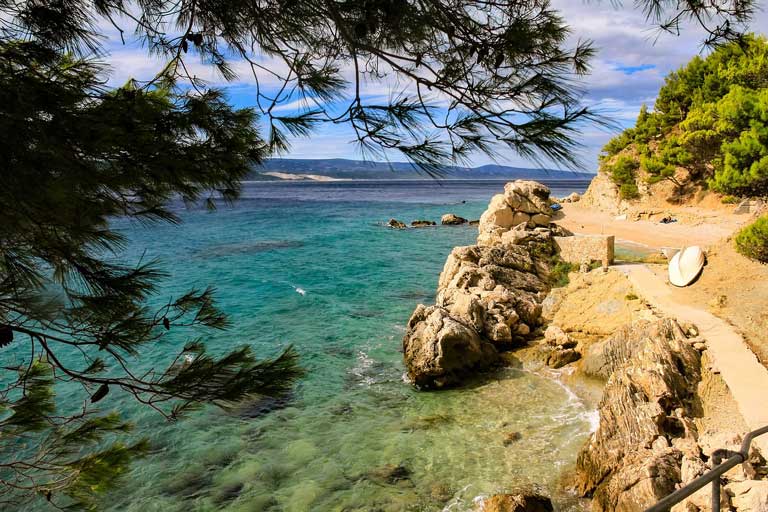
Ask anyone what Croatia is known for and immediately, one of the things they will mention is beaches! They span along the coast between Dubrovnik in the south and Rijeka in the north. The dramatic peninsulas and the sun-kissed bays sit on the Dalmatian coast. With ferries running between several beaches, visiting them is a journey in itself. For example, you can travel via ferry from Hvar Island to Stiniva Beach.
Just as we did with the islands, here too, we will list the most commonly frequented beaches in Croatia.
- Spiaza on Susak Island is accessible by ferry from Mali Losinj. Since the beach has shallow water, you’ll have to go further to swim.
- Bacvice in Split is ideal for families. The beach has a café. It’s also the place where the sport picigin, which is specific to Split, was created after WWI.
- Lovrecina Bay on Brac Island features translucent waters with olive groves and medieval ruins in the backdrop.
- Kraljicina Plaza in Nin, also known as the Queen’s Beach, is located 15 km from Zadar. The beach features bars and a captivating view of the Velebit Mountains. Another reason to visit it is for the peloid mud found there. It’s said to offer relief from joint and muscle pain.
- Uvala Dubovica on Hvar Island has amassed quite a global reputation among travellers over the years. However, it’s not the easiest beach to visit due to limited parking. Therefore, we recommended renting a bike to explore it.
There are more than beaches and islands in Croatia though. The dazzling waterfalls will enamour you with their gorgeousness.
4. Croatia is Known for its Magnificent Waterfalls
One of the top tourist attractions in Croatia is its eye-catching waterfall and national park adventours. Watching the waterfalls flowing elegantly into the stream is an ethereal experience. If you find yourself in Croatia, pay a visit to these waterfalls:
Skradinski Buk Waterfall
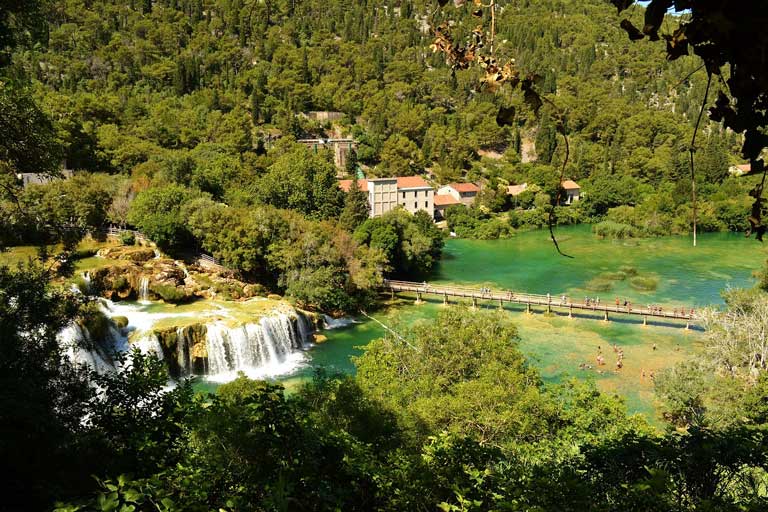
Situated in Krka National Park of Croatia, Skradinski Buk Waterfall is River Krka’s biggest waterfall. In Croatian, Buk means cascade. This is a fitting name because the waterfall features a succession of 17 steps over the span of 800 metres. The UNESCO protected site is a great place for relaxing and swimming.
Roski Slap Waterfall
Roski Slap Waterfall is another waterfall situated in Krka National Park in Croatia. From the primary source of the river, you need to travel 36 km downstream via boat from the Skradinski Buk. Look above the amazing waterfalls to take in the natural scenery, especially the cave. Afterwards, you can explore the cave, if you like.
The Great Waterfall
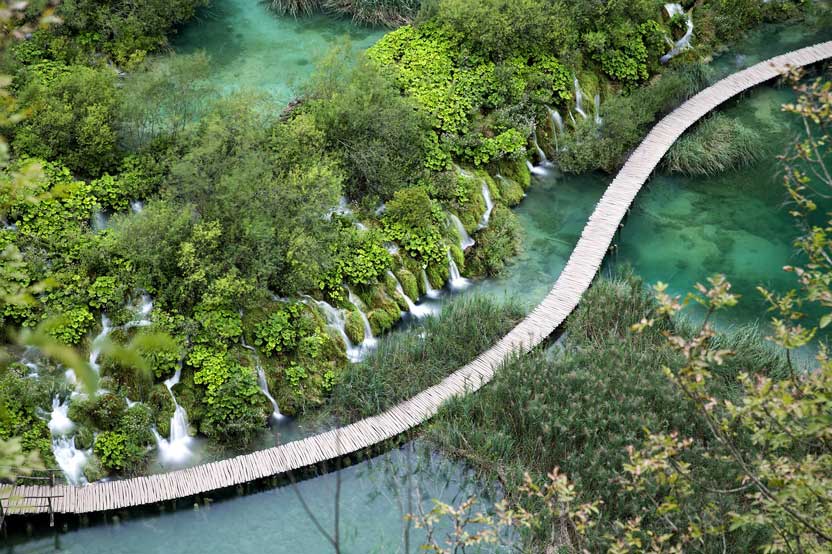
The Great Waterfall‘s location is in Croatia’s largest national park, Plitvice Lakes National Park. Measuring 296.85 sq m, the park is a UNESCO-recognised territory as well. Set your sights on the waterfalls to see the colours change before your eyes.
The minerals and the sunlight cause the water to shimmer.
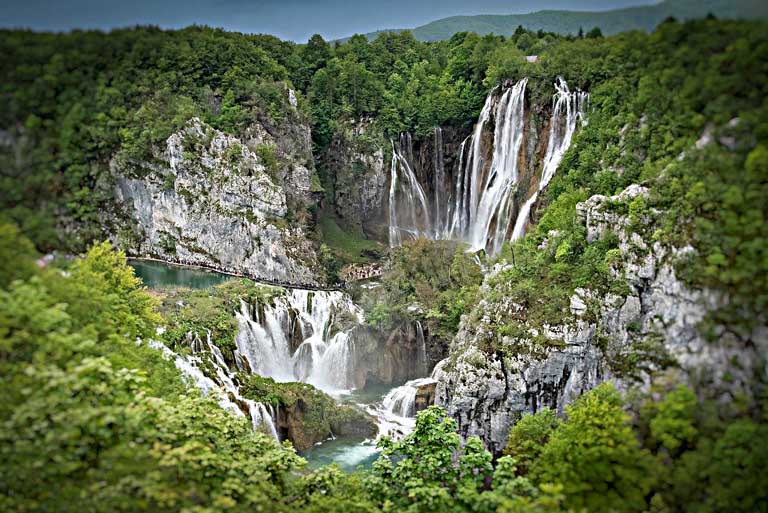
As a result, it alters the water from azure to green and then grey and blue. In total, Plitvice Lakes has 16 lakes, including the Great Waterfall. In addition to the waterfalls, the national park has caves, meadows, forests, rivers, streams, and flora and fauna.
Rastoke Waterfalls
Rastoke Waterfalls is situated in the village of Rastoke, which is located in Slunj town. The village is referred to as “Small Lakes of Plitvice” because it’s the meeting point of two rivers. Slunjčica River pours into the Korana River to form numerous small lakes, waterfalls, and rapids.
Mreznica Waterfalls
Mreznica Waterfalls, a natural waterway in Croatia, features various waterfalls, canyons, mills, and springs. The Mreznica River gives us around 90 waterfalls and it’s great for kayaking in Croatia. While these waterfalls aren’t as high as the ones in Krka National Park or Plitvice Lakes, they still deserve a visit.
Zrmanja Waterfalls
Zrmanja Waterfalls can thank the Zrmanja River for its 12 cascades. If you’re in an adventurous mood, Zrmanja is where you should be. In all of Croatia, Zrmanja is known as one of the best river rafting destinations. Even though the river is excellent for extreme activities, it also has spots where you can sit, relax, and enjoy.
But your entire time won’t be spent in nature, as Croatia is much more than its outdoors. It lures travellers through customs, as well as dance, and music.
5. The Popular Croatian Festivals
We know one of the first things that comes to mind when asked, “What is Croatia known for?” is its islands and beaches. Although we won’t dispute that, let’s introduce you to the wonderful world of Croatian festivals.
Croatia Yacht Week – a Well Known Boat Party
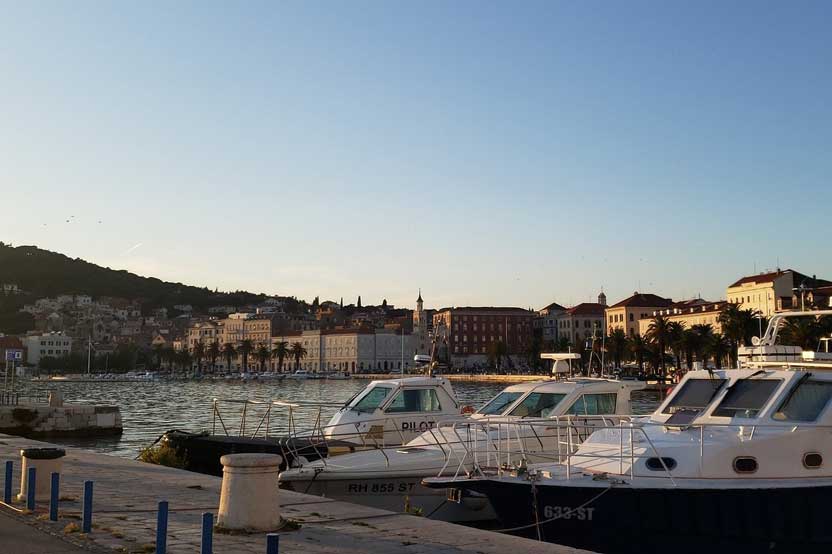
The Yacht Week is a renowned Croatia yacht party, a festival that lasts for seven days! What is the Yacht Week festival about? It involves groups of people getting on a yacht and then sailing out to sea and being part of the famous Croatia boat party. With music in the background and food and drinks before you, you’re guaranteed to have a fabulous time.
St. Vincent Day Wine Festival
St. Vincent Day Wine Festival occurs on the Sunday that’s closest to Jan 22nd of each year in Strigova. Jan 22nd ushers in the start of the new wine-making and grape-growing season in Croatia. The festival honours St. Vincent, a beloved saint in Croatia, who is remembered as the protector.
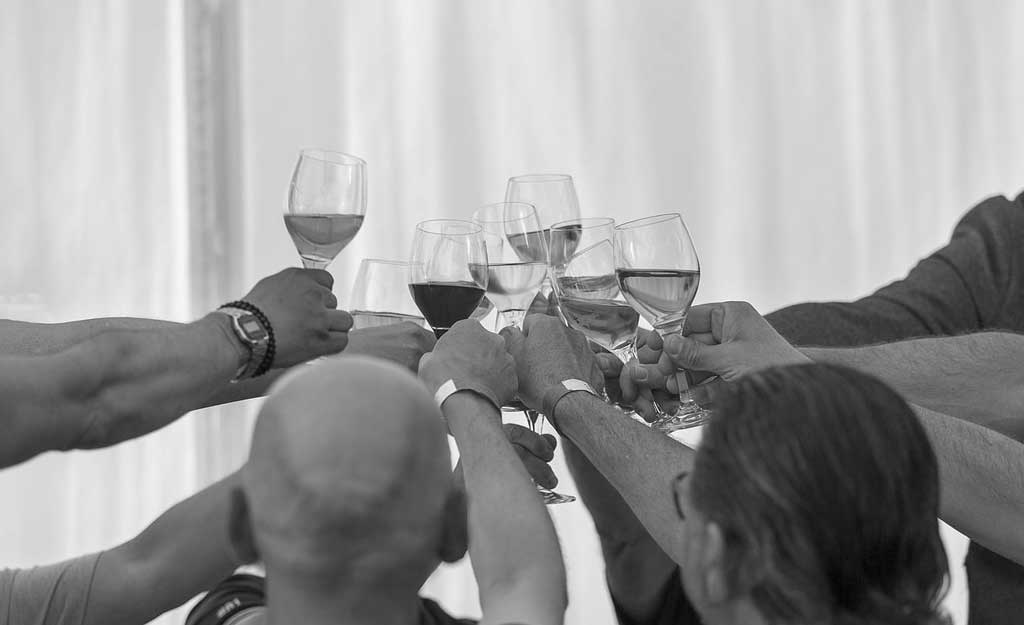
He protects wine traders and winemakers. The Croatians refer to him as Sveti Vinko. So, on the day, winemakers go with a group of people to bless the vineyard. They cut three branches with three buds to take home. Pour last season’s wine and consecrated water on the ground.
Next, they hang air-dried sausages on a vine to promote the production of larger grapes. However, the modern-day ceremony happens on a large scale. From across Croatia, including neighbouring countries of Austria and Hungary, people visit to partake in the ceremony. The ceremony ends with drinking wine.
Carnival
Carnival or Carnivale in Split is the city’s version of Mardi Gras. You can expect to see street processions, masked balls, as well as music over the duration of ten days. The organisers convert the Riva embankment into a carnival for kids followed by a procession. The party doesn’t stop but continues late into the night at a club with a DJ. Each year, the Carnival is celebrated on Shrove Tuesday, the day before the beginning of Lent.
After you have partied yourself out, set a different course for yourself — one that leads to the ancient Roman ruins.
6. Diocletian’s Palace
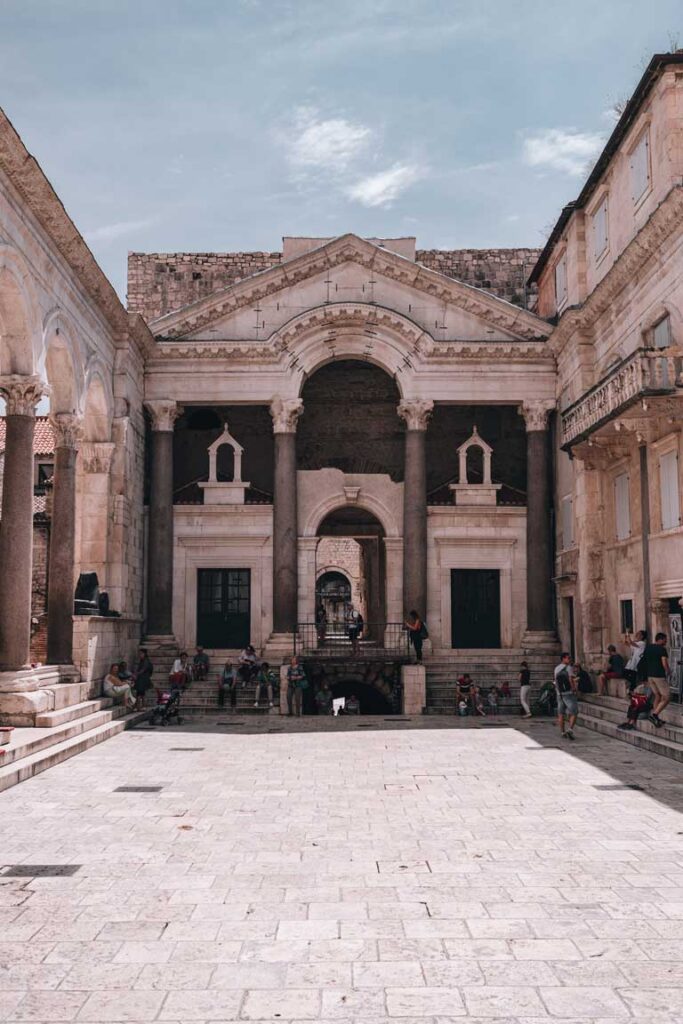
Diocletian’s Palace is a 1,700-year-old structure and Split’s star attraction. The Roman emperor Diocletian constructed the palace between 295 and 305 CE. The palace features white stone from Brac Island, marble from Greece and Italy, and 12 sphinxes and columns from Egypt.
Moreover, he built a gate at the centre of each wall and named them after a metal. The five gates are the western Iron Gate, the eastern Silver Gate, the southern Bronze Gate, and the Golden Gate. For him, it served as a seaside retirement home whereas future conquerors used it as a refuge.
Afterward, visit the 187-foot-tall belfry and the Peristil. The latter acted as a podium for Diocletian to speak to the public.
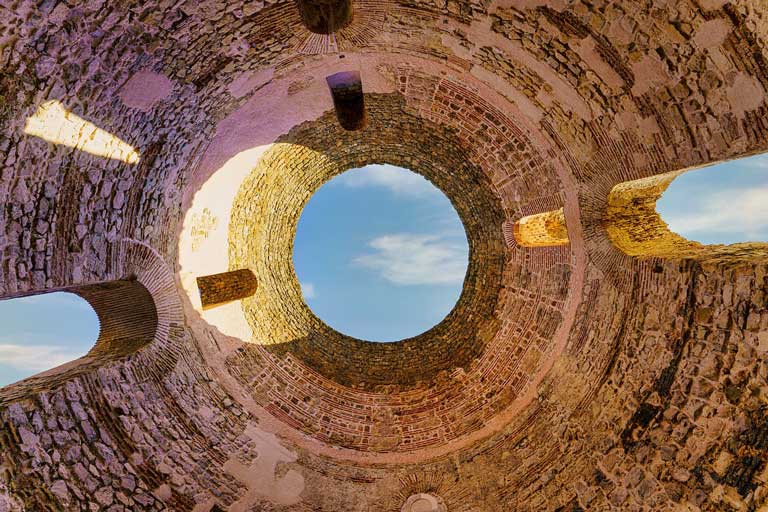
Today, the palace is a UNESCO World Heritage Site and houses residents, bar owners, hoteliers, shopkeepers, and restaurateurs. Yes, you can sleep in the palace of Diocletian, indeed. However, we don’t recommend sleeping there. Instead, you can experience the Emperor’s Suites in Split, which is not far from the palace.
All in all, Diocletian cemented his place in history by erecting the imposing well known palace in Croatia. Although he’s not Croatian, he’s famous in his own right in Croatia.
A couple of famous Croatians have claimed their own spot in history through their feats.
Famous People Croatia is Known For
Here are a few famous Croatian people that have not only made an impact in Croatia but also around the world:
Croatian Artists
- Ivan Mestrovic was a sculptor. His notable works include the statue of Gregory of Nin and Nikola Tesla.
- Oscar Nemon was referred to as the “Sculptor of the Nation’s Leaders.” He created statues of the British Royal family, three former British Prime Ministers, and a decorated British Army Officer.
Well Known Scientists from Croatia
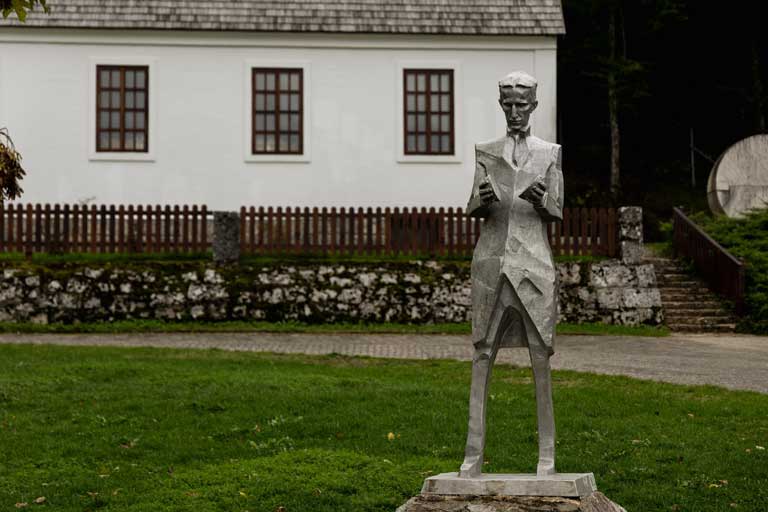
- The famous Nikola Tesla, an electrical engineer and one of the world’s most famous inventors. He aided in the technological advancement of wireless devices and communications. Most importantly, he invented the alternating-current electrical system that delivers electricity to buildings and homes.
- Ruder Boskovic was a physicist, astronomer, mathematician, and philosopher in the 18th century.
Musicians from Croatia
- Ivo Pogorelic is an esteemed concert pianist who in his lifetime played across the world with numerous orchestras.
- 2Cellos has achieved international acclaim for their music. They cover popular songs such as “Smells Like Teen Spirit,” “Smooth Criminal,” and “Sweet Child o’ Mine.” They have toured with Elton John and were even featured on the hit show “Glee.”
Prominent Authors Croatia is Known For
- Marco Polo was a distinguished author, merchant, and medieval traveller. He became one of the first Europeans to travel the Silk Road, the trade route between China and Europe. The birthplace of Marco Polo was Venice, Italy. Despite being born in medieval Venice, researchers discovered evidence that his family may have emigrated from the Croatian island of Korčula.
- Ivo Andric wrote the 1945 novel, “The Bridge on the Drina.”
- Slavenka Drakulic authored the “Café Europa”, “As If I Am Not There”, and “The Balkan Express,” to name a few.
- Ivan Gundelic, a celebrated 17th-century poet, penned several poems during his life. The most notable ones are “Tears of the Prodigal Son” and “Osman.”
- These Croatian personalities made a significant impact on the world with their achievements. While these famous Croatians broke labels, there are a couple of Croatian stereotypes that continue to be prevalent.
What Food is Croatia Known For?
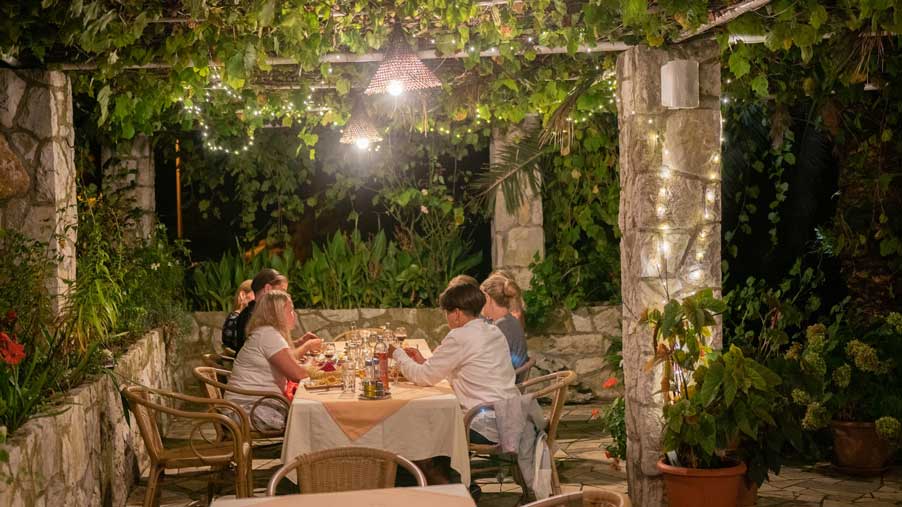
The Croatians are “foodies” and expect everyone to love food as much as they do.
According to a Serbian newspaper’s research, Croatia’s residents spend the most when it comes to food, compared to all the Balkan countries, including the countries from former Yugoslavia.
Different regions in Croatia come each with their distinctive dishes. One of Croatia’s most recognisable dishes is Zagorski Strukli, which can be salty or sweet. Zagorski Strukli has become such a prominent dish for the country, and as a result they have added it to the Croatian cultural heritage list.
Another distinctive Croatian dish is “Sarma” – a stuffed cabbage roll made of sauerkraut leaves, with added mixture of mince meat, eggs, onions and other ingredients. As a matter of fact, “Sarma” is a popular dish in most Balkan countries.
Croatians are also party animals and overall very jovial.
More Interesting Facts about Croatia
Here are few interesting facts that further explain what is Croatia known for:
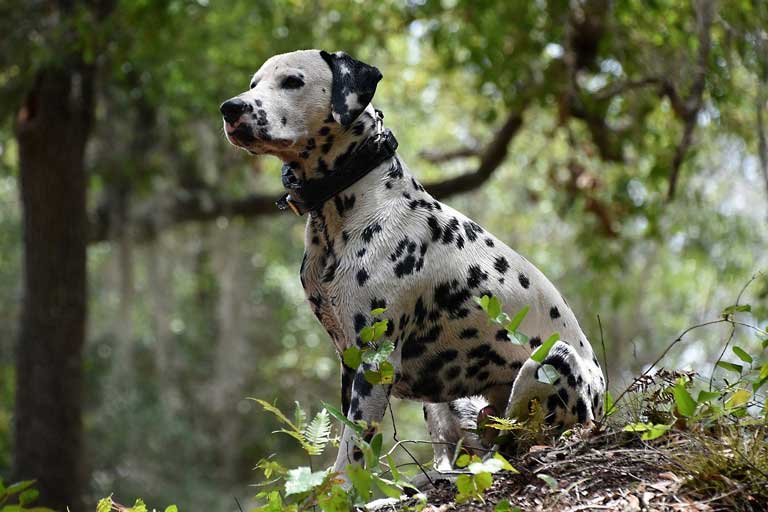
- Dalmatia is a region in Croatia and by far, the most famous one. However, not many know that the dog breed Dalmatians originated from Dalmatia on the Adriatic Sea.
- Croatia or Hrvatska in Croatian is derived from Medieval Latin Croātia, which is a derivative of Croats’ native ethnonym.
- Without a doubt, Croatia and its fans are known for its football. Croatians are passionate about football. Their national football team has one silver medal and two bronze medals from playing in five FIFA World Cup tournaments. Some notable players include Davor Suker, Luka Modric, Mario Mandzukic, Dario Simic, and Ivan Perisic.
- Croatia’s foray into winemaking is thanks to the Greeks. The country has around 41,188 winemakers with their vineyards covering roughly 20,885 hectares of land.
- The Balkan country has the largest white truffle, weighing 1.31 kg (2 lb and 8 oz). Giancarlo Zigante of Pototoska discovered it on Nov 2nd, 1999 in Buje, Istria.
- Necktie (Cravat) is a mispronunciation of the word Croat in French. French soldiers saw Croatian mercenaries wearing neckties in the 17th century. On their return to France, they brought the fashion trend with them. The mispronunciation began when they tried to name it after the original trendsetters. As the saying goes, it got lost in translation.
- Eye of the Earth Croatia – it refers to the Cetina River Spring, or Izvor Cetine, and is popular also with its other name – “Eye Dragon”.
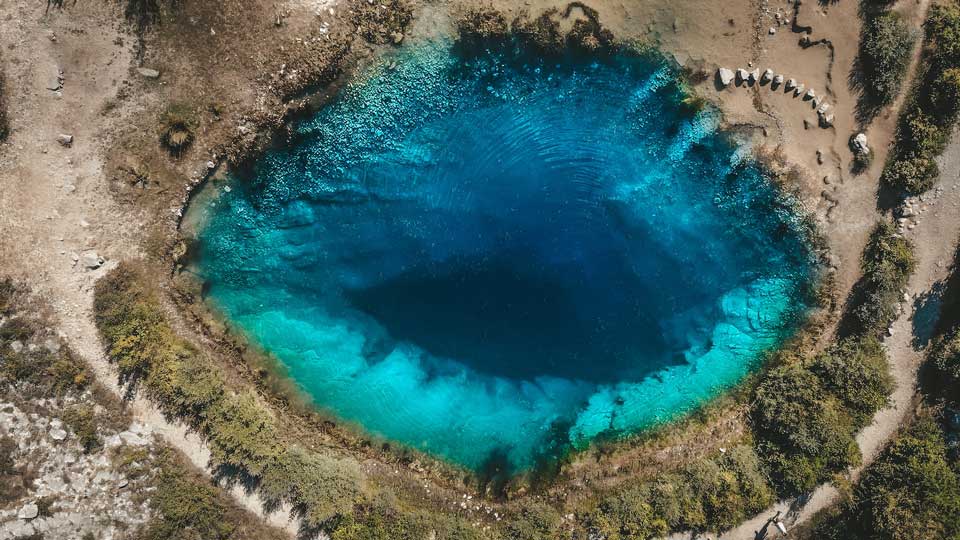
Before we conclude, we want to present you with a few more interesting facts about Croatia.
Witty Remarks about Croatians
Following are examples of some witty remarks about Croatians:
- Zagreb residents (Croatia’s capital) are cold and reserved as well as posers or posh.
- Zagorje residents think they are born with a baccalaureate and therefore, are always right. Additionally, they are organisers, especially when it comes to drawing borders on their land. Lastly, they are winegrowers and big wine drinkers.
- Dalmatia residents are assumed to be lazy. The use of phrases such as pomalo and fjaka also doesn’t help. Pomalo is a person with a slow and relaxed attitude. Fjaka is a person with a relaxed state of mind and body. Furthermore, women are perceived for their fiery temper and their tendency to fight intensely.
So, Why Visit Croatia?
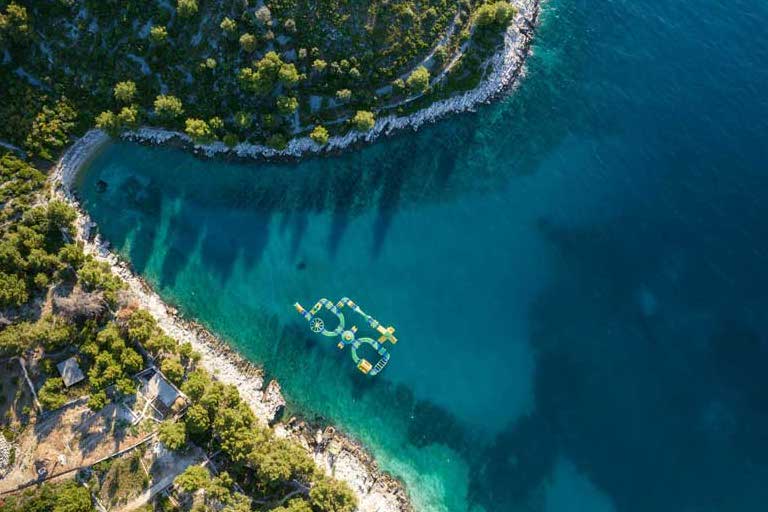
In conclusion, Croatia is a beguilingly beautiful country to tour. Its illustrious history, rich culture, and spellbinding natural landscape entice people to visit. Plus, it has something for everyone, hence making Croatia the ideal choice for people with different interests.

